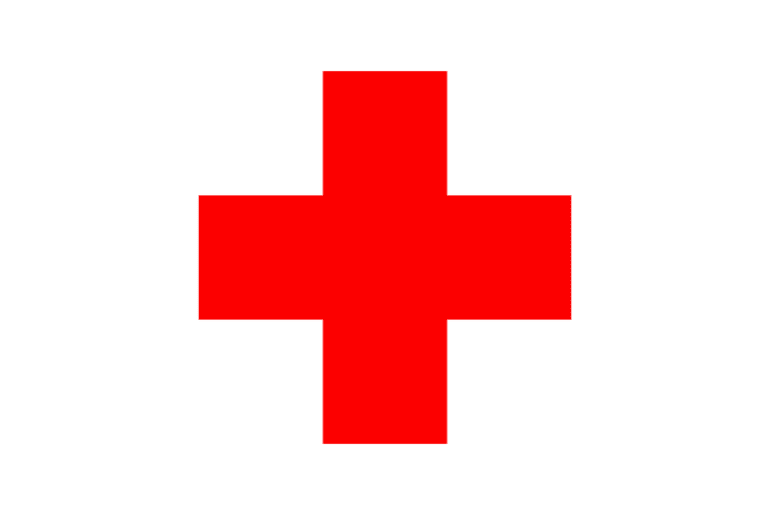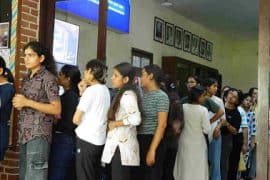 After looking at the issue of sanitation in the University’s colleges, which turned out to be less than satisfactory, we turn our attention to the status, rather the lack, of healthcare facilities in DU colleges. Sanitation and healthcare should go hand-in-hand because they are inextricably linked.However, the focus here is on the state, or availability, of infirmaries in colleges and hostels. How many of our colleges tell us what is to be done in case of a medical emergency? Very few, if any at all.
Medical emergencies can range from a gash in the leg to a fracture in the skull and different levels of preparedness are required for the different kinds of accidents that can occur. In the absence of a proper channel to deal with medical emergencies, like nurses and hospitals in partnership, an emergency situation can escalate into one of utter chaos and panic. The parameters to gauge the emergency preparedness of colleges are the availability and upkeep of infirmaries, tie-ups with hospitals in the vicinity, health camps, infirmaries in hostels and first-aid training.
In a disappointing find, we realised that very few colleges had fully-functional infirmaries. While colleges like Gargi, Kamala Nehru, Lady Shri Ram, Maitreyi, Ramjas and Sri Venkateswara have well-functioning infirmaries, Shri Ram College of Commerce has what is known as a ‘first-aid room’ and Delhi College of Arts and Commerce has a first-aid box that students can make use of when required. College of Vocational Studies has a room designated as the “Infirmary” but as one student of the college points out, it was last used as a fee collection centre. Miranda House has an infirmary in the hostel which the day-scholars may use when required and the LSR Residence Hall has a room labeled “Infirmary” with but a small cupboard of medicines. Needless to say, no college is doing enough.
In such a situation, questions like how many nurses and how many beds and what types of medicines become redundant. The colleges that do have functioning infirmaries also have nurses and medicines and in some cases, beds as well; they are also open throughout college hours and do not follow a very bureaucratic procedure of admission. In the absence of an infirmary, what are the other measures that colleges can take? For starters, they can have tie-ups with hospitals nearby or at least have their numbers displayed, including numbers for ambulances. They can also organise camps where first-aid delivery can be taught to students.
One regular feature in all colleges seems to be health camps for a variety of check-ups: hemoglobin levels, bone density, dental health and so on, often in association with hospitals and specialists. Now,regular check-ups may not be on the colleges’ agenda.Also, noo law states that colleges must have infirmaries and first-aid facilities.However,in a space where so many people co-habit, it is the responsibility of the institute to take steps to ensure safety. At the end of the day, if an accident does occur on the college premises and immediate care is not taken, the onus will lie on the college.
Well-fun
After looking at the issue of sanitation in the University’s colleges, which turned out to be less than satisfactory, we turn our attention to the status, rather the lack, of healthcare facilities in DU colleges. Sanitation and healthcare should go hand-in-hand because they are inextricably linked.However, the focus here is on the state, or availability, of infirmaries in colleges and hostels. How many of our colleges tell us what is to be done in case of a medical emergency? Very few, if any at all.
Medical emergencies can range from a gash in the leg to a fracture in the skull and different levels of preparedness are required for the different kinds of accidents that can occur. In the absence of a proper channel to deal with medical emergencies, like nurses and hospitals in partnership, an emergency situation can escalate into one of utter chaos and panic. The parameters to gauge the emergency preparedness of colleges are the availability and upkeep of infirmaries, tie-ups with hospitals in the vicinity, health camps, infirmaries in hostels and first-aid training.
In a disappointing find, we realised that very few colleges had fully-functional infirmaries. While colleges like Gargi, Kamala Nehru, Lady Shri Ram, Maitreyi, Ramjas and Sri Venkateswara have well-functioning infirmaries, Shri Ram College of Commerce has what is known as a ‘first-aid room’ and Delhi College of Arts and Commerce has a first-aid box that students can make use of when required. College of Vocational Studies has a room designated as the “Infirmary” but as one student of the college points out, it was last used as a fee collection centre. Miranda House has an infirmary in the hostel which the day-scholars may use when required and the LSR Residence Hall has a room labeled “Infirmary” with but a small cupboard of medicines. Needless to say, no college is doing enough.
In such a situation, questions like how many nurses and how many beds and what types of medicines become redundant. The colleges that do have functioning infirmaries also have nurses and medicines and in some cases, beds as well; they are also open throughout college hours and do not follow a very bureaucratic procedure of admission. In the absence of an infirmary, what are the other measures that colleges can take? For starters, they can have tie-ups with hospitals nearby or at least have their numbers displayed, including numbers for ambulances. They can also organise camps where first-aid delivery can be taught to students.
One regular feature in all colleges seems to be health camps for a variety of check-ups: hemoglobin levels, bone density, dental health and so on, often in association with hospitals and specialists. Now,regular check-ups may not be on the colleges’ agenda.Also, noo law states that colleges must have infirmaries and first-aid facilities.However,in a space where so many people co-habit, it is the responsibility of the institute to take steps to ensure safety. At the end of the day, if an accident does occur on the college premises and immediate care is not taken, the onus will lie on the college.
Well-fun ctioning infirmaries are part of manifestos of various candidates contesting for students’ union elections. But, after the campaigning and the polling, the matter often fizzles out. If our colleges are disability-friendly and Wi-Fi enabled and not just about classrooms and canteens, they must also have well-functioning infirmaries.
In hostels,infirmaries become all the more important; having access to ambulances and following appropriate medical procedure is equally important. If a medical emergency does arise at any point of the day, the immediate action should be to deal with it. Calling up a student’s local guardians is tantamount to relieving oneself of all responsibility. Yes, as adults, we are expected to take care of ourselves and be able to manage in case of untoward situations, but a little help from the organisation that we are a part of does not hurt. Not knowing where to get an ambulance from if a student is uncomfortable in the dead of the night is a bad situation and has occurred time and again.
It is only when we have the basic infrastructure in place that we can talk about more specific problems like the availability of trained staff and permanent ambulances. The health of individual students may not be the college’s concern but to not be able to help when something happens on the college campus is, unacceptable. From what it looks like now, the situation is quite urgent and changing it is going to require more sensitivity on the authorities’ part and more lobbying on the students’ part.]]>
ctioning infirmaries are part of manifestos of various candidates contesting for students’ union elections. But, after the campaigning and the polling, the matter often fizzles out. If our colleges are disability-friendly and Wi-Fi enabled and not just about classrooms and canteens, they must also have well-functioning infirmaries.
In hostels,infirmaries become all the more important; having access to ambulances and following appropriate medical procedure is equally important. If a medical emergency does arise at any point of the day, the immediate action should be to deal with it. Calling up a student’s local guardians is tantamount to relieving oneself of all responsibility. Yes, as adults, we are expected to take care of ourselves and be able to manage in case of untoward situations, but a little help from the organisation that we are a part of does not hurt. Not knowing where to get an ambulance from if a student is uncomfortable in the dead of the night is a bad situation and has occurred time and again.
It is only when we have the basic infrastructure in place that we can talk about more specific problems like the availability of trained staff and permanent ambulances. The health of individual students may not be the college’s concern but to not be able to help when something happens on the college campus is, unacceptable. From what it looks like now, the situation is quite urgent and changing it is going to require more sensitivity on the authorities’ part and more lobbying on the students’ part.]]>
Alankrita Anand
[email protected]; Alankrita is a student of Journalism at Lady Shri Ram College for Women. Technology is one thing that terrifies her and at the helm of a good old newspaper is where she hopes to be one day. Reading, writing and holidaying (not necessarily in that order) are her favourite things to do. If not a journalist, she would be a politician, as goes the trend.



Comments are closed.